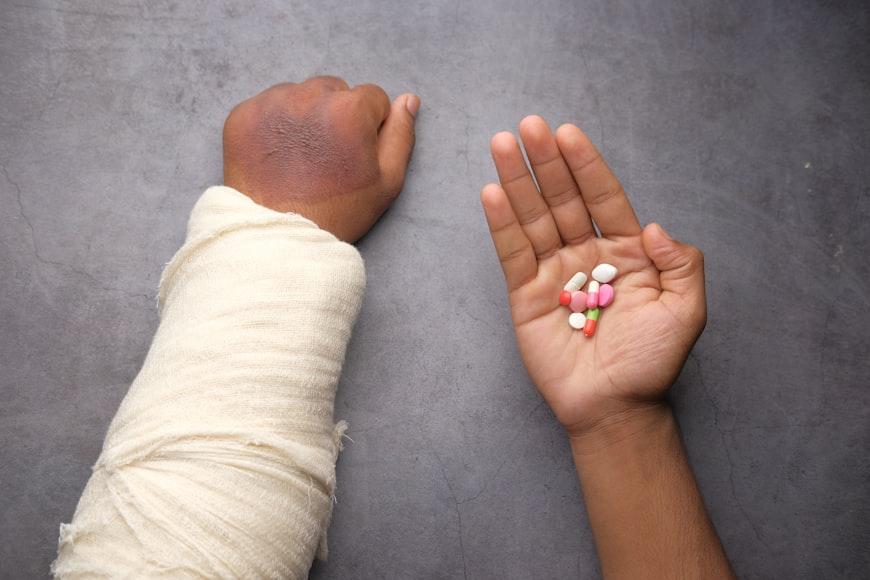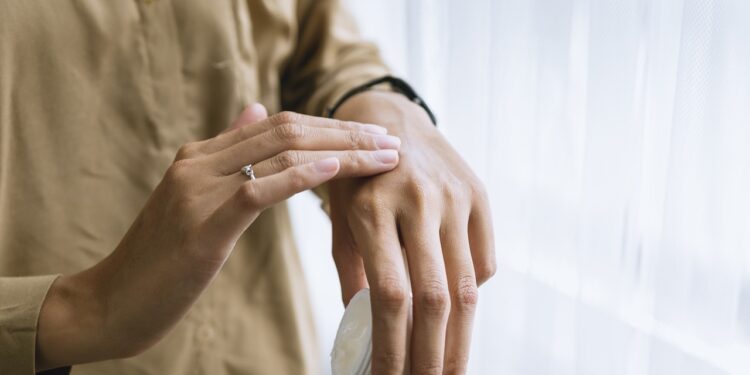Skin lesions are very common skin conditions that appear in the form of weird bumps, spots, or patches on the skin. They can look different depending on what’s causing them. Some are small, big, flat, or even raised. Skin lesion is just a change in the way the skin looks or feels. Sometimes they are harmless, but other times they might be signs of something more serious.

Types of Skin Lesions
As explained above, lesions can appear in different forms and they are of different types. There are the primary lesions and the secondary lesions.
Primary Skin Lesions
Primary skin lesions are basically the first signs that something is going on with your skin. They usually appear out of nowhere and look different depending on the problem.
Macules: Macules are small, flat spots on the skin. They are different colors from normal skin. Macules don’t stick out or have any texture, they’re usually flat. Examples: Freckles, vitiligo, and café au lait spots.
Patches: Patches are just like macules, but bigger. Examples: Mongolian spots, blue or gray patches found on babies, and psoriasis patches, red, scaly areas on people’s skin.
Papules: Papules are small solid bumps that you can feel when you run your hand through your skin. However, they are not filled with anything, just raised skin. For example, acne, warts, or moles.
Nodules: Nodules are basically papules but bigger and deeper under the skin. You can usually feel that they are solid, but they go deeper than usual into the skin. For example, cysts or lipomas.
Vesicles: Vesicles are tiny blisters which are filled with fluid. If you’ve ever had chicken pox or a cold sore, it means that you’ve had vesicles before. Examples: Herpes simplex and chicken pox.
Bullae: Bullae are basically bigger vesicles. There are bigger blisters with larger fluids. Examples: Burns, bullous pemphigoid.
Pustules: Pustules are like vesicles but instead of being filled with clear fluid, they are filled with pus. They are the pimples with the white head that you can sometimes pop. However, it is not recommended. Examples: Acne and impetigo.
Wheals: Wheals are raised itchy spots that appear suddenly and disappear after a short time. They are like swollen bumps that come and go. Examples: Hives and insect bites.
Comedones: Comedones are either open or closed clogged pores. Open comedones are blackheads and closed comedones are whiteheads.
Secondary Skin Lesions
As the name implies, secondary skin lesions are what happens after a primary lesion has been around for a while. This often happens if you have scratched, or picked the primary lesion.
For example, let’s say you’ve had a blister, which is a type of primary lesion, but then it pops and you are left with a scar. That crust or scar is now a secondary lesion. Secondary skin lesions are basically the next steps in the skin reaction, usually because something has happened to the original spot.
Scales: Scales are those dry, flaky patches that you can sometimes peel off. It’s kind of like what happens when the skin peels after it’s sunburned. Basically, scales are just dead skin cells stacking up. Examples: psoriasis and eczema.
Crusts: Crusts are when a blister or sore pops up and dries out, leaving behind a rough layer made of dried up fluid, pus, or even blood. Examples are impetigo and scabies.
Erosion: This is when you lose the top layer of your skin. It is not really deep but it can leave your skin feeling very raw and exposed. Examples: a popped blister and a shallow infection.
Ulcer: An ulcer is a deep sore that goes through more than just the top layer of the skin, which can take a long time to heal and requires serious care. Examples: pressure ulcer or diabetic ulcer.
Scar: A scar is what is left after your skin heals from something like a cut or acne. Having a scar is a process whereby the skin patches up the injured area of the skin, new tissues develop, but they don’t look or feel the same as regular skin. Examples: acne scars or surgical scars.
Atrophy: Atrophy is when the skin gets thinner or weaker usually because of aging or when the skin stretches out too much and doesn’t go back to normal. Examples: stretch marks or aging skin.
Conclusion
Skin lesions show up in all kinds of ways. You need to know the difference between them so you can really figure out what’s happening with your skin.
Primary lesions are the first red flag that something’s not right, while secondary lesions happen later, usually because you’ve scratched, picked at them, or they’re healing. Being able to tell them apart can help you know if it’s something you can ignore or if you need to get it checked out.

















